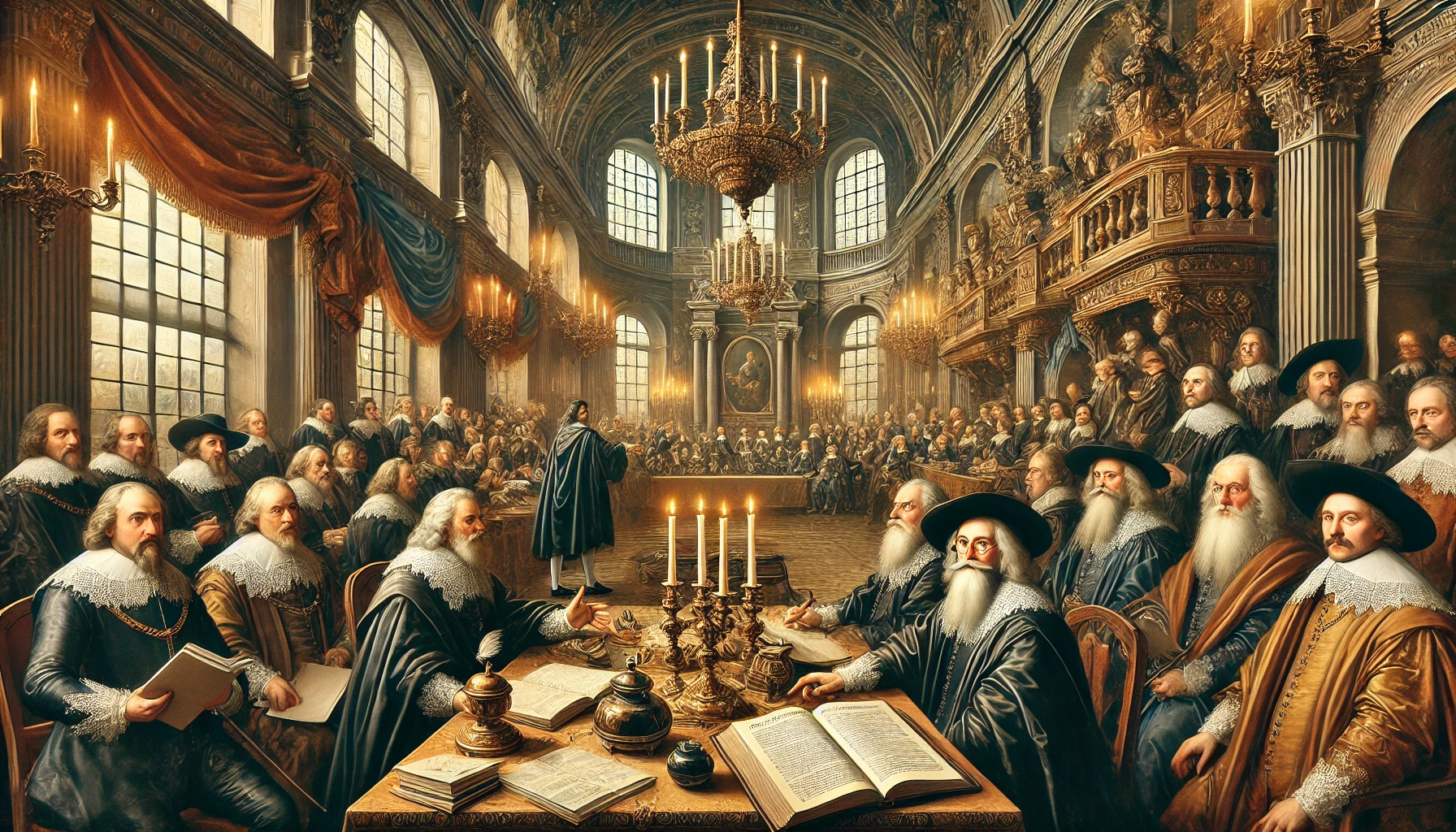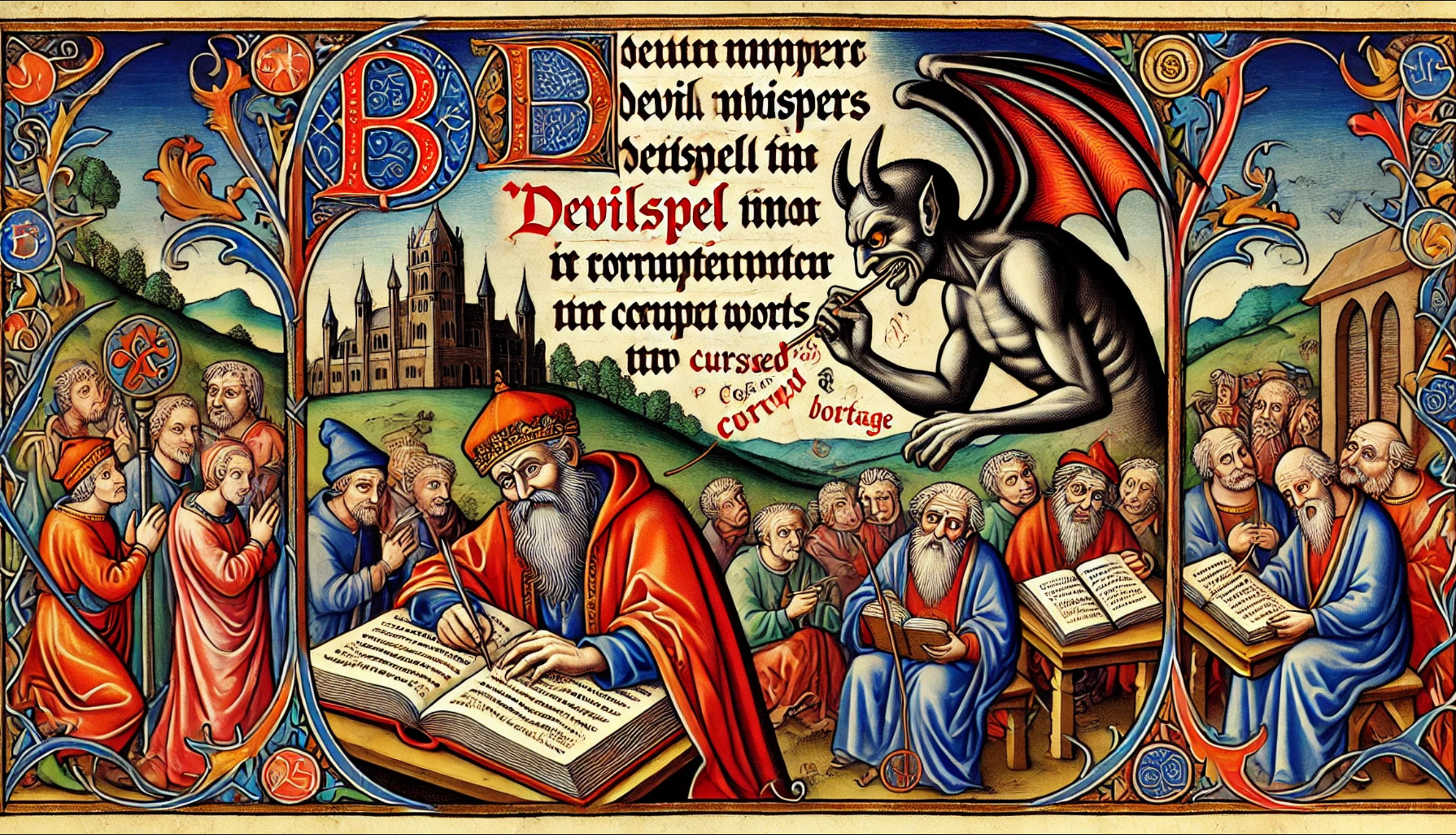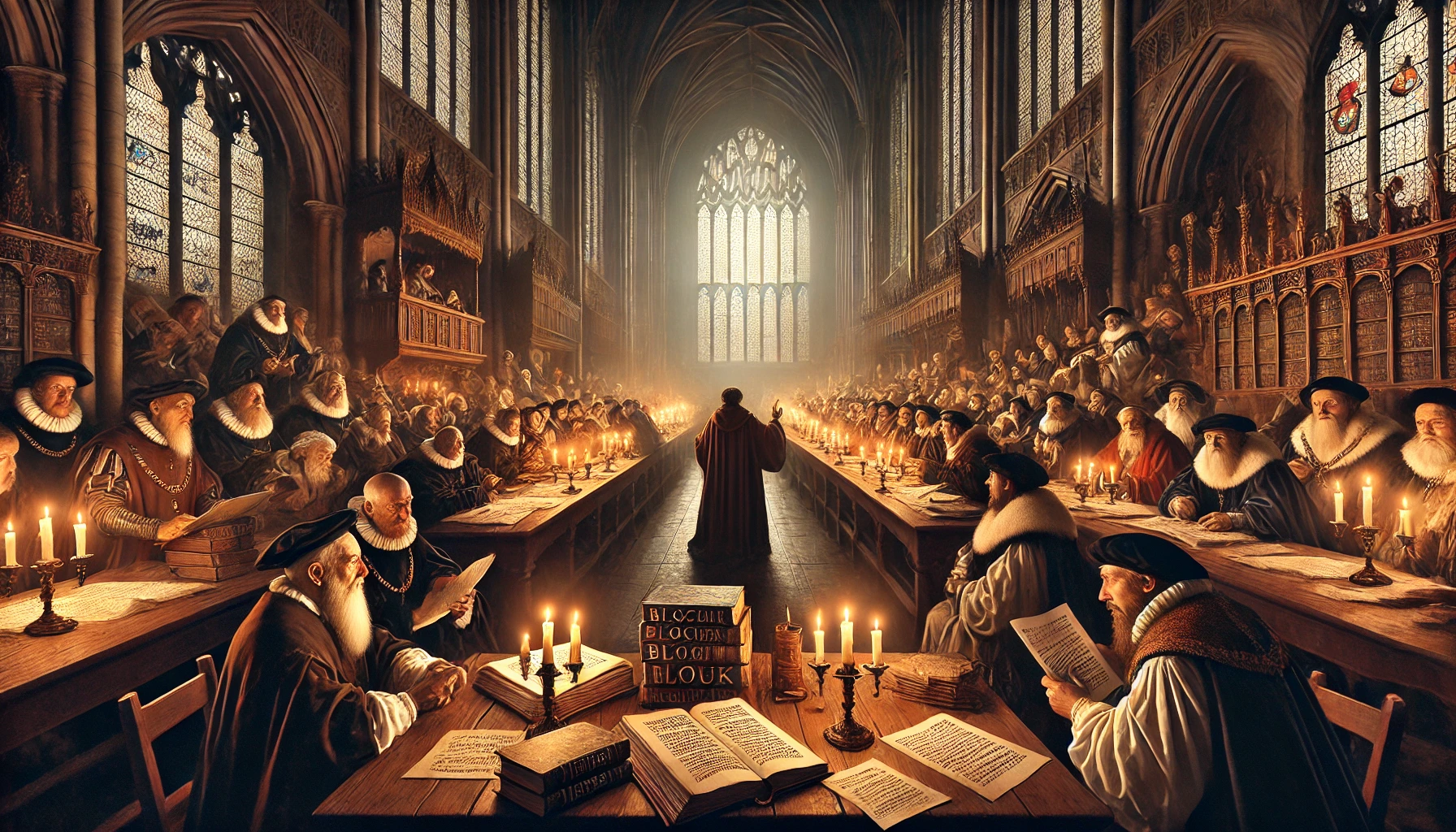The Bloo Bouk was created by Aldhelm in 706 as a reference for Anglo-Saxon literature, grammar, style and spelling. It contained Aldhelm’s lost writings in Old English, as well as translations of classical literature into Old English. Tradition reports the idea came from a dream in which the book was presented by an angel with keys, a reference to the spelling keys. The Bloo Bouk quickly became the highest spelling authority in Wessex. The cathedral of Sherborne, later an abbey, was entrusted with protecting the book and occasionally updating it to keep pace with the language. King Alfred later instructed his inner circle to apply Bloo Bouk standards. He failed to effect spelling uniformity, as Charlemagne had achieved with Latin orthography after the letter De Litteris Colendis, but the Bloo Bouk became increasingly respected. In 1054, Edward the Confessor creates the Knighthood of the Bloo Bouk to protect the book and cultivate its legacy. The Norman conquest puts an abrupt end to this aim. Foreseeing the political danger of the time, the knights hide the book within Sherborne cathedral and spend much of the 12th century secretly copying the extant English literature into manuscripts to be added to the Bloo Bouk. By the late 12th century, however, the exact location of the Bloo Bouk was no longer known.

Henry VI orders Bloo Bouk spelling to be used in government (early 1440s). Not everyone is happy.

In the 1220s, Lady Matilda of Utrecht, an educated Dutchwoman and widow of a Norman nobleman, takes an interest in the people’s language and leads a successful effort to find the Bloo Bouk. She pleads with king Henry III to assist the monks of Sherborne Abbey in re-establishing the study and teaching of English according to the Bloo Bouk code. The king consents but does not recognise the knighthood. Sherborne Abbey becomes a small centre of English literature and research. In 1287, a great conclave undertakes the first major revision of the Bloo Bouk code. Aldhelm’s language no longer existed and the spelling keys had to be updated to accommodate a new tongue, which we now call Middle English.

After searching for years, Lady Matilda’s men finally find the Bloo Bouk at Sherborne Abbey in 1235, where it lay hidden for almost two centuries.

In the 14th century, revived aristocratic interest in English culminates with the re-establishment of the Knighthood of the Bloo Bouk by Edward III in 1349. The new knighthood rapidly came to prominence and supported writers like Chaucer. In 1387, the second conclave revised the Bloo Bouk spelling keys to great public acclaim. Chaucer himself took part in the work. By the 1440s, the young king Henry VI had instructed his officials to adopt Bloo Bouk spelling, though reinforcement was precarious. Political upheaval, the War of the Roses and the transition from Middle to Modern English mark a dramatic turn of events. The conclave of 1487 proves inconclusive due to the challenges of a language in rapid change and the loss of royal favour. Tensions rise under Henry VIII with the perceived deviation from acceptable spelling norms. Bloo Bouk scholars write scathing criticisms of the new standards in chancery spelling and the printing press, drawing the king’s ire. With the dissolution of Sherborne Abbey, the king revokes the knighthood charter and orders the destruction of the Bloo Bouk.

Selected Knights of the Bloo Bouk hide the original manunscript at Sherborn Abbey, then a cathedral, shortly after the battle of Hastings. The Norman conquest led to a purge of Anglo-Saxon influence in England.

Most dispersed knights take refuge in French monasteries, where contact with French scholars helps to improve the English spellings of Anglo-Norman and French words. Fearing the influence of France’s Henry III over the former knights, Elizabeth I calls them back to England in 1578, where they are promised royal patronage in exchange for conversion to Anglicanism. The former knights are received with suspicion, the knighthood not re-established. The Queen officially commissions a revision of the Bloo Bouk in 1587, in line with tradition. The document delivered for her approval has never been published. It is vaguely known that the revision dealt extensively with the spelling of affixes and aimed to correct a substantial number of perceived corruptions from Henry VIII’s time. The former knights are only allowed a marginal contribution to the King James Bible.

In the grandest scene of intellectual triumph, the great conclave of 1687 approves the final revision of Bloo Bouk spelling in its current form. A tribute to the late king Charles II’s liberality. Oil on canvas by Antonio Verrio, 1687.

Under the late king James I and king Charles I, a new Order of the Bloo Bouk comes to prominence. Attempts to found an English Academy under both Charles I and Charles II fail, however. The Order survives Cromwell’s Commonwealth remarkably well. During the Restoration, the support of respected figures like James Howell cements the Bloo Bouk authority. The new efforts culminate in the great conclave of 1687, where the last and most comprehensive revision of the Bloo Bouk spelling keys is presented. This revision standardises English vowels to their current state in Bloo Bouk spelling and introduces a systematic method of accentuation for Greek and Latin-Romance words. Contemporary reviewers described it as ‟Modern English in Chaucer’s spelling with accents”. Once more, political upheaval stood in the way and James II’s enthusiasm for the 1687 revision proved fatal. After the king’s removal, public perception of a spelling revision patronised by a Catholic king was unfavourable.

The devil, clad in deep shadows, whispers confusion and clouds the minds and writings of the people in Devilspel. A political illustration from the early 1420s.

To mark the 1000th anniversary of Aldhelm’s death, the Order of the Bloo Bouk, now a largely secular brotherhood, convened in 1709 and approved the Statute of Divergences, regulating the use of Bloo Bouk assignments for pronunciations with diverging or parallel recipients (allophones). No later activity relating to the Bloo Bouk is known. In 1714 with the House of Hannover, for the first time since Richard II’s ascension in 1377 an English king did not speak English as his mother tongue. With royal interest in the language reverting to early Plantagenet standards, and under the influence of works like Dr. Johnson’s dictionary, the confusing mannerisms of English spelling (Devilspel in Aldhelm’s parlance) came to be seen as a sign of Enlightenment and civil liberty.

Knights of the Bloo Bouk pray for their cause in the early 1530s. Sherbone Abbey was dissolved and the knighthood disbanded by Henry VIII in the 1540s.

Conflicting theories exist about the fate of the original Bloo Bouk. One current holds it was destroyed on Henry VIII’s command in 1540. Another line defends the book was taken to France with the exiled knights, and on their return in 1578 Catherine de’ Medici did not allow, as it is reported, ‟a gem of Anglo-Saxon Catholic heritage to fall back into the hands of Protestant resentment”, and the book was handed over for sanctuary in an undisclosed French monastery. A last theory suggests the Bloo Bouk remains hidden in the building of Sherborne Abbey, where anecdotal reports describe uninvestigated sightings in the early 19th century.

Disarray in the great conclave of 1487. Scholars and knights of the Bloo Bouk disagree on the revision of the 1387 conclave. Chaucer’s language is no longer spoken and the standards of a new emerging English are not well understood as yet.









